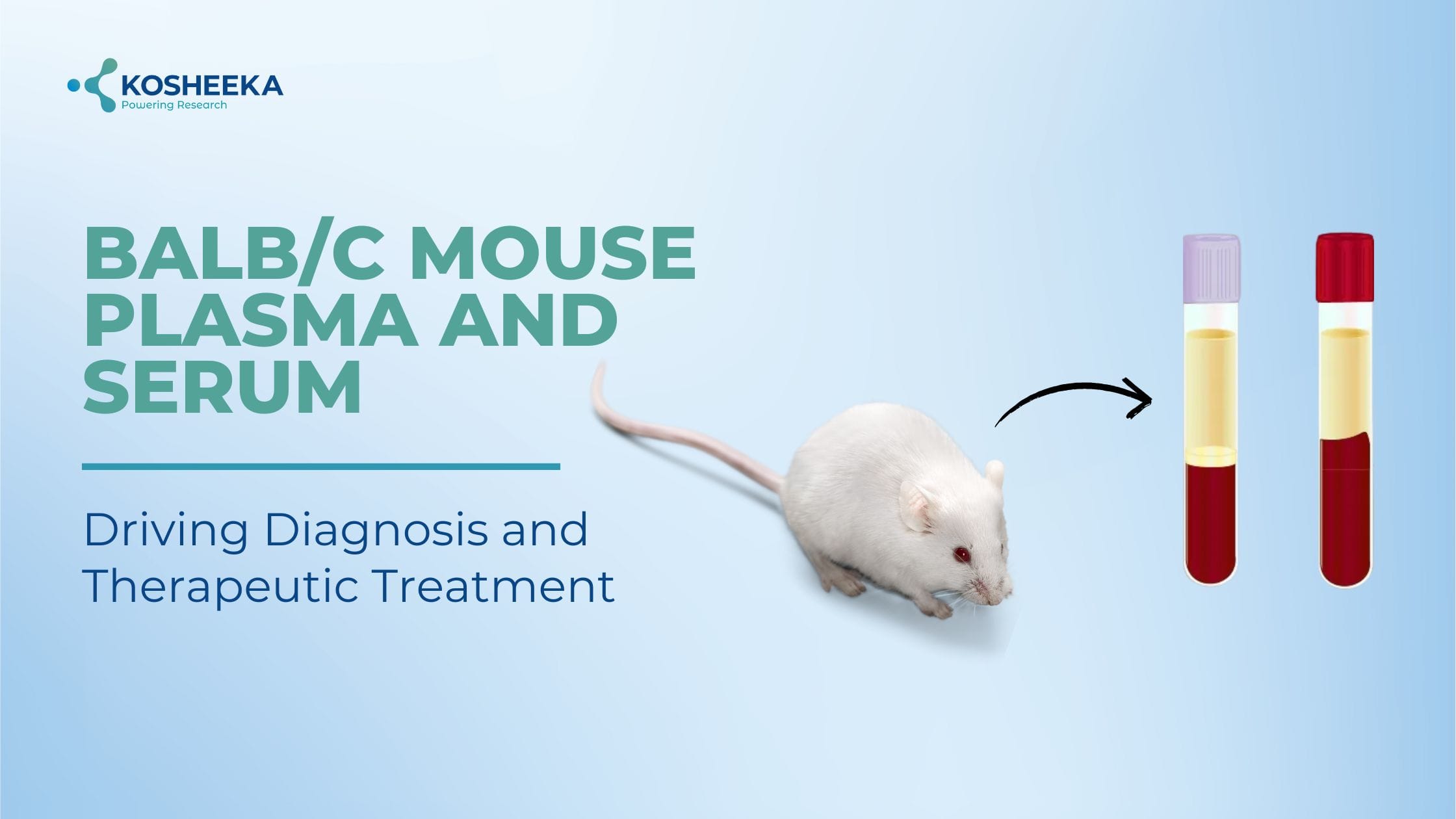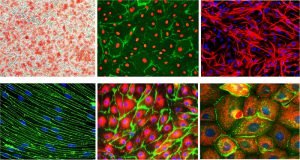BALB/c mouse is a widely used animal model in preclinical studies. Their blood-derived products are also significant in research applications. BALB/c mouse plasma and serum contain diverse biomolecules that incorporate the changes in the physiological states of the body. As a result, they have found applications in searching new drug leads and their subsequent development. Their role in identifying diagnostic markers has been pivotal in disease management.
Why BALB/c Mouse?
Mice are phylogenetically close to humans, prompting their utilization in research for relevant results. BALB/c is an inbred mouse model known for resistance towards atherosclerosis triggered by diet, easy activation of the Th2 response against immunization, and production of plasmacytoma. BALB/c mice’s accessibility, low heterogeneity, and ease of breeding have made them popular for use in in vivo research.
Consequently, a great deal of research has also been done on their biofluids, serum and plasma.
Mouse Plasma and Serum in BALB/c
Generally speaking, blood’s watery component is blood plasma. The plasma extracted from BALB/c mice contains proteins, lipids, metabolites, hormones, enzymes, antibodies, electrolytes, coagulating factors, and vitamins along with water as the major constituent. In brief, it is blood without its cellular component, that is, red blood cells, platelets, and white blood cells. On the other hand, serum does not contain the clotting or coagulation factors as well as cells. The extraction procedure for both the products begins with collecting the whole blood from the BALB/c mice via saphenous vein, tail vein, retrobulbar plexus, or facial vein.
Extraction of Plasma
It requires blood collection in specialized anticoagulant tubes. EDTA, citrate, and heparin are some common anticoagulants. Anticoagulants inhibit the blood clotting process, thereby retaining the coagulation factors in plasma. The centrifugation of blood forms three layers (Fig 1). The erythrocytes settle down in the lower layer. Leukocytes and platelets form the middle layer, also called the buffy coat. The yellowish fluid in the upper layer is plasma.
Extraction of Serum: It utilizes normal collection tubes. The whole blood is allowed to stand for half an hour to allow clotting, followed by centrifugation. The resultant upper layer contains serum, and the lower layer consists of clotted blood (Fig 1).

Difference between Serum and Plasma
Apart from the different extraction procedures, studies have also suggested variation in the overall content and amount of biological molecules, including lipids, proteins, and metabolites between the both. Additionally, the clotting factors separate out from serum but remain in plasma. The presence of clotting factors deem plasma as a preferable candidate for blood transfusion for its ability to promote wound healing. Serum has the advantage of not containing additives like EDTA, which could affect the research design, whereas plasma is preferable for coagulation and transfusion studies.
Applications of BALB/c Mouse Serum and Plasma
Identification of Diagnostic Markers: Blood often reflects the pathological changes in the body. Therefore, BALB/c mouse plasma and serum are primarily used for the detection of disease-specific markers. For example, cell-free circulating DNA (cf-DNA) present in the blood of cancer patients has diagnostic use. Therefore, research studies analyze these blood derivatives to identify more biomarkers, establish their normal range, and correlate their concentration specific to disease. Scientists are exploring different indicators of pathological conditions to increase the sensitivity and specificity of the diagnosis. It will essentially aid in the detection of the disease earlier before it reaches to late stages. It will, in turn, lead to prompt treatment administration that can significantly prolong survival period and increase survival rate.
Omics Studies
The advent of modern technologies such as next-generation sequencing (NGS), mass chromatography (MS), and nuclear magnetic resonance (NMR) has enabled the evaluation of protein, lipid, and metabolite composition as well as the expression of nucleic acids. The analysis of the data generated by these omics studies on BALB/c mouse serum and plasma can provide deep understanding of the pathogenesis of a disorder. The expression of certain proteins or genetic changes can also act as markers for prognosis and diagnosis. For example, mutations present in cancer patients reveal the origin of the tumor cells and the possible course of the disease and also aid in diagnosis. Such information is vital for tailoring the treatment according to the patient.
Coagulation Studies
BALB/c mouse plasma contains the factors that drive the clot formation. This process has serious complications in cardiovascular diseases. Several devices, like stents and valves, are inserted in the heart for treatment of cardiac disorders. However, they often encounter thrombosis. Therefore, scientists are exploring different biomaterials and designs of such devices for coagulation.
Drug Efficacy
The evaluation of drugs or treatments for their effectiveness requires mouse models. The BALB/c mice are suitable for and frequently used in cancer and infectious disease research. At specific time points, plasma or serum is collected from mouse to assess for changes in their composition or improvements in reference parameters. This analysis is also beneficial for optimizing the drug dosage and duration for improving the effectiveness.
Toxicity Screening
Toxicity screening is integral to the drug development cycle. Due to the detectable markers in plasma and serum, drug development uses them in the screening process. Cell culture and animal models are the in vitro and in vivo systems for the screening process, respectively. Their blood derivatives are estimated for clinical parameters as a preclinical or investigative study. The process of microsampling has gathered interest for collecting blood from mouse without euthanasia. It has the ease of acquiring samples at different time intervals, offering significant information regarding the treatment.
Therapeutic Interventions
Research has demonstrated that transfusing the plasma of a young mouse to an old mouse can potentially reverse aging in the older mouse. Similar outcomes have been observed in neurological disorders as well. According to another study the intraocular injection of plasma along with growth factors led to improvements in age-related macular degeneration. Additionally, platelet-rich plasma has applications in wound healing and dermatology. Scientists are researching BALB/c mouse plasma to delineate the underlying mechanism of action and develop novel therapies.
Cell Culture
Serum contains growth factors, hormones, and trace minerals are beneficial for cell growth and proliferation, deeming it an essential component of cell culture. The cell culture employs various mouse cells for experiments. Therefore, many laboratories are attempting to assess the effects of adding BALB/c mouse serum in the culture medium.
Extracellular Vesicles
Several kinds of extracellular vesicles, such as exosomes and microvesicles, have been found in blood. They contain diverse biomolecules like proteins, lipids, nucleic acids, etc. BALB/c mouse plasma and serum are used to isolate these vesicles and employ them for therapeutic and diagnostic purposes.
The Concluding Remarks !!
Plasma and serum are essential blood components. They vary their constituents depending on the disease and treatment. As a result, BALB/c mouse serum and plasma are useful for identifying new and more effective biomarkers, developing novel therapies, and evaluating their efficacy and safety. Nowadays, proteomic, lipidomic, and metabolomic studies on mouse plasma and serum assist in designing a panel of biomarkers for detecting the disease, understanding its progression, and optimizing the treatment.
Due to the various applications, Kosheeka provides plasma and serum from diverse species, including human, rodent, and non-rodent animal models. The team at Kosheeka extracts the products on demand in a cruelty-free manner and ships them readily, avoiding any delays. We also provide the option of customized donor characteristics for your specific research needs.
FAQs
Q: What are plasma and serum?
Plasma is blood without red blood cells, white blood cells, and platelets. Serum can be defined as plasma without coagulation factors.
Q: How is plasma and serum extracted?
After the whole blood collection, it is incubated at room temperature in a standing position to allow clotting. After 30 minutes, the blood is centrifuged and the upper layer containing serum is taken out. For plasma preparation, whole blood is collected in a tube containing anticoagulants. The blood is then centrifuged, resulting in three layers- lower layer (containing erythrocytes), the middle layer or buffy coat (containing leukocytes and platelets), and the upper layer containing plasma.
Q: What are the research applications specific for plasma?
Plasma contains coagulation factors that are essential for wound healing and therefore, prompting their use in transfusion. Therefore, research pertaining to coagulation and transfusion is conducted on plasma.
Q: What is the key difference between plasma and serum?
The key difference is the coagulation factors in plasma that are absent in serum. Additionally, studies have suggested variation in the amount of constituents in both plasma and serum.


